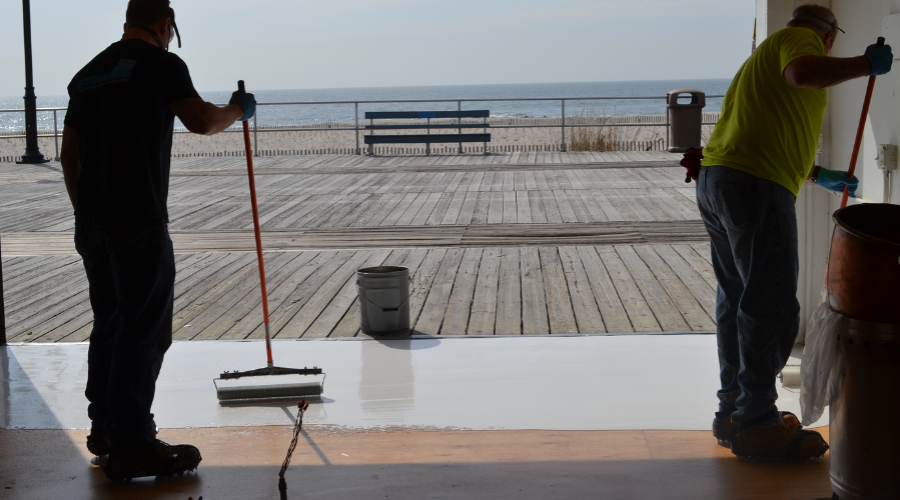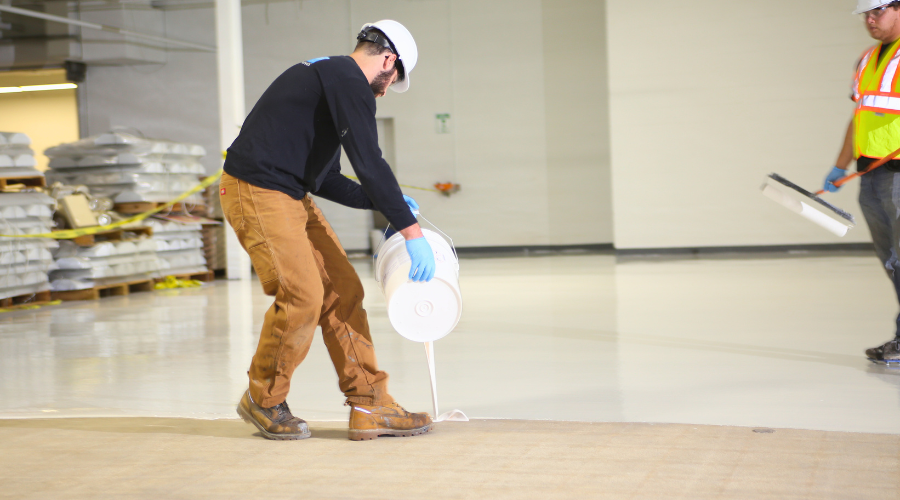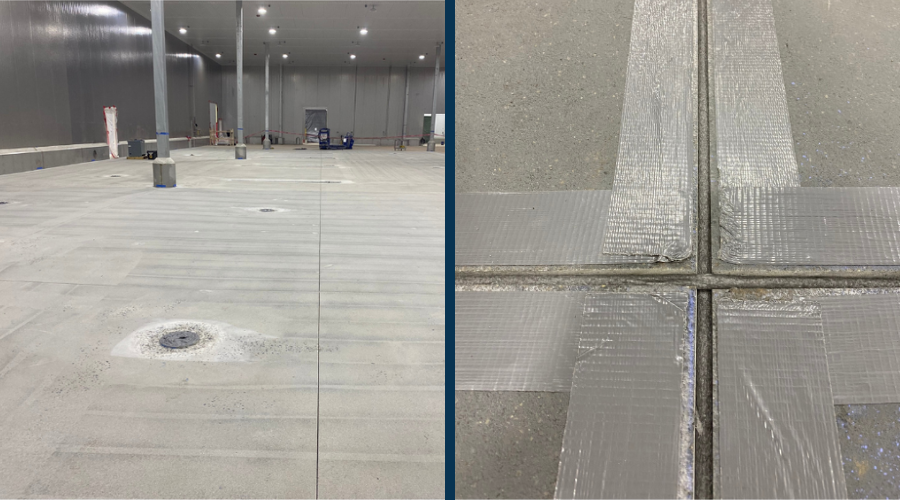Table of Contents:
Table of Contents:
Watch the video:
The success of a seamless, resinous flooring installation depends on the meticulous preparation of the concrete surface. Proper preparation is crucial to ensure adhesion, longevity, and a flawless finish. In this blog, we explore the essential steps involved in preparing concrete for a resinous flooring installation.
Why Is Surface Preparation Important?
Properly prepping concrete is a foundational step in your flooring installation process. The preparatory phase of opening concrete pores creates a rougher texture for the resinous material to bond to, and ensures the longevity, durability and aesthetic appeal of your finished floor. Improper preparation can lead to various issues that compromise the floor’s durability, appearance and overall performance.

An installer prepares a concrete substrate to ensure a perfect foundation for a durable and seamless resinous floor system.
How Is a Concrete Surface Prepared?
1. Cleaning:
Concrete surfaces are porous and can contain contaminants like oil, grease, dirt or remnants from existing coatings. These impurities can hinder adhesion and lead to delamination, bubbling or premature failure of the new flooring system.
If there is a contaminated slab, our installation team will thoroughly clean the concrete surface to remove all dirt and debris. Stonhard’s process involves a combination of sweeping, vacuuming, and scrubbing with a degreaser or detergent. For stubborn stains or oil residue, pressure washing is sometimes necessary to ensure a clean substrate.
2. Surface Profiling:
After cleaning, your installer will profile the concrete surface in order to enhance its adhesion. Profiling involves creating a rough texture on the concrete – typically achieved through mechanical methods like shot blasting or grinding. This opens the pores of the concrete and provides a better surface for bonding.
In addition to removing contaminants and impurities,the laitance layer of the concrete needs to be removed to ensure a great bond. This layer is formed from the excess water in the concrete used for application and is extremely weak.
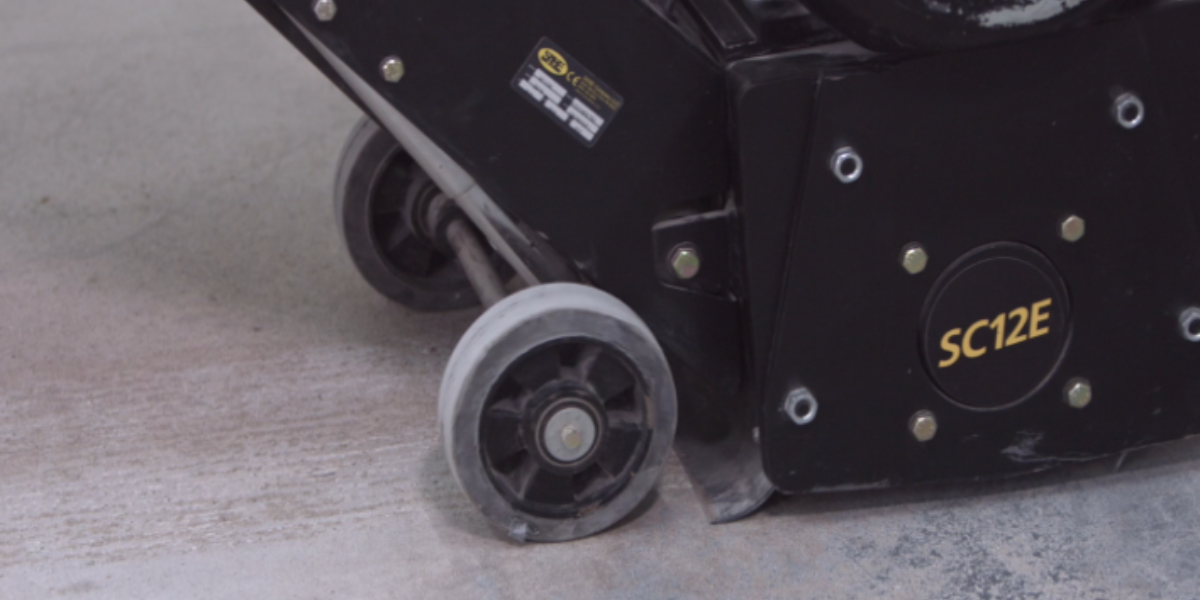
A concrete scarifier utilizes spinning blades attached to a rotating drum that chips away upper layers of concrete. This machine excels in stripping coatings; and it achieves a smooth, level surface.
3. Repairing Cracks and Imperfections:
Inspecting the concrete for any cracks or defects is important as it can detrimentally affect the integrity of the flooring if ignored. Remedies include filling in cracks and holes with a concrete patching compound.
4. Moisture Testing:
Moisture is a significant concern for your substrate, and excessive moisture vapor emissions can cause flooring systems to bubble or delaminate. Stonhard installers conduct moisture tests to assess the moisture content of the concrete, taking appropriate mitigation measures if necessary.
Read more in our series about Moisture Vapor Transmission in our series “Water & Your Floor.”
Q: Should Concrete Preparation Include Acid Etching?
Acid etching, while no longer recommended for commercial and industrial applications, involves applying hydrochloric/muriatic or buffered phosphoric acid onto a concrete slab, followed by a water-rinse to remove the solution. Stonhard does not perform etching or acid etching and instead relies on grinding and blasting to profile the concrete.
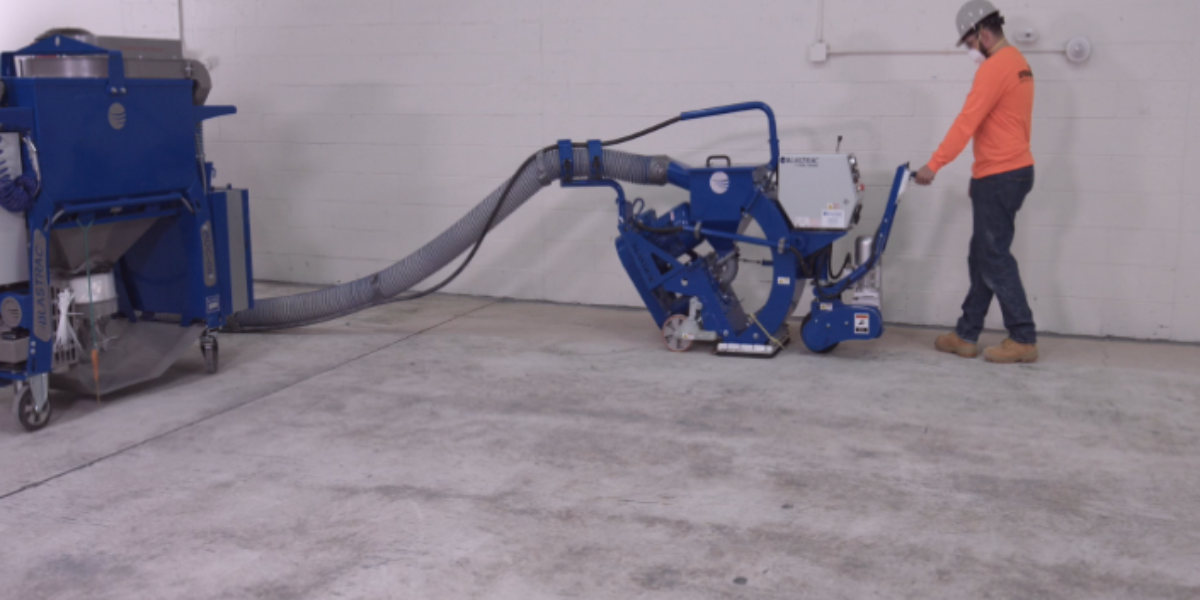
Shot blasting is a technique employed to prepare the substrate for polymer flooring application. Unlike sandblasting, shot blasting differs in its method of execution and efficiency. Seen here, a Stonhard installer is using the Blastrac shot blaster to prepare a concrete substrate.
5. Vacuuming:
Installation crews finalize the preparation process by thoroughly vacuuming the concrete to remove dust and debris. A clean substrate is essential for ensuring proper adhesion and a smooth application.
Proper preparation of your substrate is critical for the success of any resinous floor or coating. By following these essential steps, our installation crew will ensure optimal adhesion, longevity, and performance of your new flooring system. Once the work is completed, our installation team will walk the finished floor with you to inspect the final product. This final step is part of our commitment to quality and customer satisfaction.
About Stonhard
Stonhard is the unprecedented world leader in manufacturing and installing high-performance polymer floor, wall and lining systems. Stonhard maintains 300 territory managers and 200 application teams worldwide who will work with you on design specification, project management, final walk-through and service after the sale. Stonhard’s single-source warranty covers both products and installation. Contact us to learn more about our precision installation methods and specialized products.
Related Articles
Loving this Content?
Subscribe to upcoming topics!


